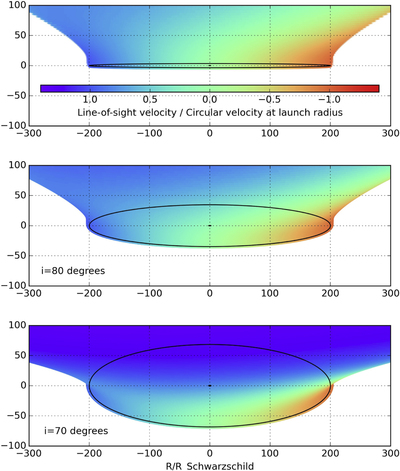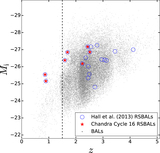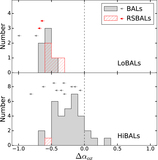Image Details

Caption: Figure 1.
Line-of-sight velocity field of the near side of a rotating, accelerating disk wind, seen at inclination ﹩i=89^\circ ﹩ in the top panel and as labeled in the other panels. The central black dot shows the black hole’s location. We see the wind from only one side of the optically thick accretion disk, and only the velocities from the near side of the funnel-shaped wind are plotted. The black ellipse shows the continuum emission region of the disk, against which the wind is silhouetted; the wind is launched from a narrow annulus just outside that region. Absorption would only be seen at the velocities found within the black ellipse. The ratio of redshifted to blueshifted absorption decreases with decreasing inclination angle. Different choices for the initial velocity, terminal velocity, acceleration profile, or launching radius of the wind would change its velocity field in detail but not qualitatively.
Copyright and Terms & Conditions
© 2017. The American Astronomical Society. All rights reserved.







